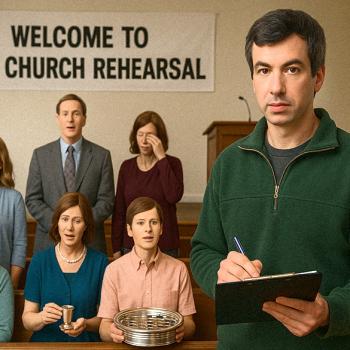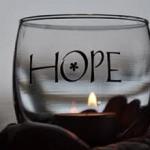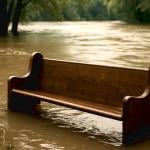
“I will lift up mine eyes unto the hills, from whence cometh my help…”
—Psalm 121:1, featured on Camp Mystic’s website
Camp Mystic looks like something out of a Southern Living fairy tale—sunlight glinting off the Guadalupe River, white-clad girls giggling on the dock, devotionals under the trees. It’s the kind of place where parents send their daughters to become wholesome, God-fearing women–with firm handshakes and Instagrammable smiles.
And now it’s the site of one of the worst youth camp tragedies in recent memory.
Flash floods swept through the area over the July 4th weekend, killing over two dozen people. Buildings—cabins, halls, gathering spaces—were wiped out. Many of them sat in a designated floodway. Not just near the river—in the zone where FEMA says water will move fast and kill quickly.
The tragedy is heartbreaking. But it’s not just a tragedy. It’s a warning—one that was ignored.
This isn’t just a story about bad luck or an act of God. This is what happens when Christian confidence meets climate denial, wrapped in nostalgia, sentimentality, and a refusal to adapt. And now, girls are dead.
Behind the Veil of Christian Camp Culture
I’ve spoken at camps. I’ve pastored at them. I’ve brought my family to them. And there’s a consistent thread that runs through so many of these places: underfunded, under-regulated, and over-reliant on prayer as policy.
Case in point: I once spoke annually at a Christian camp that let me bring my family along. One summer, my 5-year-old son walked off a concrete staircase—because erosion had eaten away the last three feet. No markings. No rail. Just air. He hit his head and leg. After bandaging him up, the staff stuck an X in painter’s tape near the top step as a warning.
The next year? Same stairs. Same missing ground. Same hazard—only the tape had worn away.
That’s how these places operate: ignore the danger, pray over the injury, and hope no one sues.
Mystic’s Perfectly Curated Image
Scroll through Mystic’s website, and you’ll get a clear image of who this place is for. While it technically isn’t all-white, you’d need a magnifying glass to spot a face that isn’t. And while they proudly spotlight a few long-serving staff of color—mostly in maintenance roles—their presentation is unmistakably tailored for the daughters of privilege. It’s less summer camp and more future trad-wife training ground.
Mystic’s a living Norman Rockwell painting with a cross stitched into the corner. A curated blend of tradition, spiritual vagueness, and the kind of femininity that never sweats. It’s not just a camp. It’s a branding exercise for Southern Christian girlhood.
You could call it a retreat. You could call it sacred. But with all the willful ignorance at play, Camp Mystic might as well have been Camp Crystal Lake. At least Jason had the decency to be fictional.
The Regulations They Should Have Followed
Here’s the thing: Texas law requires youth camps to have emergency plans. Flood protocols. Evacuation procedures. These aren’t suggestions—they’re codes. Plans are supposed to be posted in every building. Staff are supposed to be trained. Campers are supposed to know where to go.
So were these plans followed at Mystic? Were the girls trained? Were the buildings safe?
Because four cabins were built in a known floodway—a zone where no one should be housed. And Camp Mystic, unlike other Guadalupe River camps, was not accredited by the American Camp Association. They opted out of the only national program focused on health, safety, and risk management. That’s not just a paperwork choice. That’s a risk calculus—and it failed.
The Floodplain Wasn’t a Secret
Camp Mystic has flooded repeatedly for nearly a century: cabins swept away in 1932, counselors’ cars lost in 1978, an airlifted pregnancy evacuation in 1985. A flood warning system was even built after ten children died nearby in 1987—but it was dismantled in 1999 and never meaningfully replaced.
FEMA’s flood maps are famously outdated, but even those showed Mystic buildings in high-risk zones. New analysis by NPR shows even more of the camp’s infrastructure was in the path of destruction. This wasn’t a freak storm. This was a known danger that was ignored.
Texas has long treated floodplains as optional suggestions—just more environmental red tape to be side-stepped by “good ol’ boy” politics and free-market theology. And that negligence trickles down into places like Mystic, where tradition beats out adaptation every time.
The Idol of Autonomy
A lot of Christian institutions love the word “freedom.” But often, what they really mean is freedom from oversight.
Freedom from accountability.
Freedom from secular interference.
Freedom from change—even when climate, science, and reality are screaming otherwise.
Accreditation gets framed as a threat—to their values, and their checkbooks. But when you prioritize heritage over safety, kids die.
A Prayer Is Not a Plan
Many Christian camps believe that if you just stay pure, follow the rules, and keep praying—nothing truly awful can happen. Emergencies are for other places. Other people.
So while emergency plans may technically exist, the culture says otherwise. When you’re taught to feel safe because you’re godly, drills feel like doubt. Evacuation feels like weakness. Science feels like heresy.
And then the river rises.
Mourning Without Truth is Just Marketing
Right now, social media is filled with candlelit photos and painted hearts. The grief is real. The mourning is deep.
But grief doesn’t erase accountability.
Families deserve more than spiritual closure—they deserve answers.
Funny how, when disaster strikes God’s country, it’s a tragedy—worthy of prayers, photo tributes, and poetic hashtags. But when that same devastation hits a marginalized community? Suddenly it’s God’s judgment for their sin.
If Christian communities can’t confront their role in enabling this kind of negligence, they’re not offering faith—they’re offering fantasy.
Selective sovereignty is a hell of a theology.
“I Will Lift Up My Eyes…”
The camp’s website quotes Psalm 121:
“I will lift up mine eyes unto the hills, from whence cometh my help…”
But help didn’t come from the hills. Or the chapel. Or the tape stuck to the stairs.
Help should have come from planning. From oversight. From refusing to let sacred nostalgia outrank real-world responsibility.
And until Christian camps start choosing safety over sentiment, this won’t be the last time the river takes someone.
For more Snarky Faith, check out the podcast and more:
- Snarky Faith website
- Snarky Faith on Instagram: @stuartdelony
- Snarky Faith on YouTube: @snarkyfaith
- Snarky Faith on Bluesky: @snarkyfaith.bsky.social
- Snarky Faith Group on Facebook: www.facebook.com/snarkyfaith
- Snarky Faith t-shirts and mugs available here.













